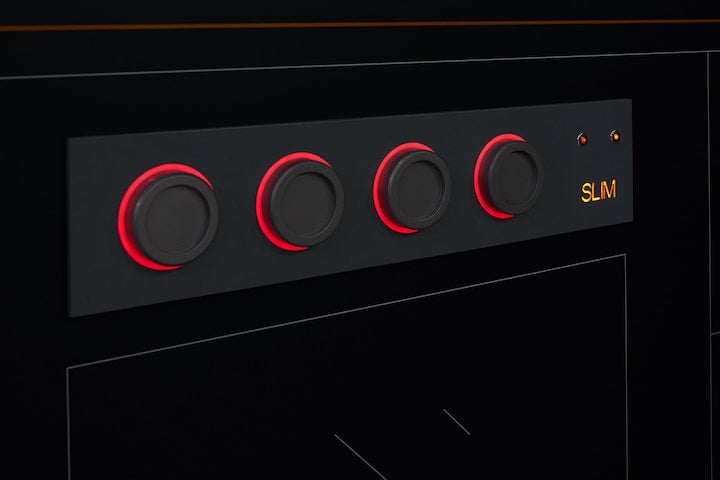Backlighting is a particular type of lighting solution that consists of placing a light source inside an application that can illuminate a specific surface, so that this light is visible from the outside of the application panel.
When thinking about a project, backlighting is not an essential factor for the creation of a product, but it should be considered as an added value that gives an aesthetic and design component to the lighting of the equipment.
Are you interested in backlighting systems in the lighting sector? Click on the button below and read the SLIM case study for Hager Gallery.

Backlighting can be applied to any type of product: from the civil and industrial lighting design sector to small and large household appliance applications, and many more. It can be used for illuminated signes and for all those applications to which you want to add an aesthetic and, in some case, functional component.
In 90% of cases, when you talk about backlighting, you are faced with a tailor-made project because the customer usually requires a light source that can be placed in specific spaces, which is fixed inside the application and has a specific light performance based on their needs.
Let’s take a look at the existing types of backlighting.
Backlighting with neon lights
In the past, backlighting projects were created using neon lights, featuring a low-intensity orange light and low consumptions with a duration of about 20,000 hours, occupying a lot of space. To obtain a different colour, fluorescent green lights were used with the same intensity as neon lights and reduced consumption.
The intrinsic properties of these sources, which did not allow for any backlighting customisation, led to the introduction of a new solution that was more flexible. Hence the introduction of LED backlighting.
What is LED backlighting?
LED backlighting consists of a light source formed by one or more LEDs positioned inside the application. This type of backlighting has a better aesthetic performance compared to neon lights in terms of light intensity, uniformity and colour. If you opt for a LED backlighting system, you can choose from a vast range of colours and achieve a greater customisation of the solution.
The LED used can be that of a standard indicator or SMD LED, mounted on a printed circuit board (PCB), so it takes up very little space, guaranteeing a better performance if a minimum footprint is required. One of the advantages of the SMD LED solution lies, in fact, in the possibility of working in very small spaces, by inserting a uniform light with horizontal or lateral diffusion (depending on how it is applied on the PCB), which is aesthetically pleasing and has a longer light source duration (i.e. 50,000 hours compared to 20,000 hours of standard lamps).

Starting from the aesthetic function of the illuminated profile, a functional aspect can also be combined with the source: with the use of RGB and RGBW technology, it is possible to associate different colours to the light according to the different states of the application. From a functional point of view, another important aspect is the possibility of inserting the backlighting device in the electronic board, so that it is either always on or so that it switches on only under certain conditions, to be defined during the initial development phase. In the case of an illuminated profile for a coffee machine, the multicoloured LED inserted in the body could indicate that the water is being heated with the red light and that the coffee is ready with the blue light.
What aspects should be defined in a backlighting project?
The first step in defining a backlighting project is the customer’s request.
The parameters for defining a comprehensive technical specification are:
- the type of light;
- the light intensity;
- the colour and tone;
- the distribution of uniform light or with spotlights;
- the operating voltage;
- the maximum temperature;
- the position of the light;
- the way the source is attached.
In the case of a tailor-made application, the customer must provide the internal dimensions available, so that a plastic case is developed in a shape that can be positioned, and possibly replaced, without a problem if the device needs to be serviced. Furthermore, knowing the internal dimensions is also essential for designing the PCB correctly.
Are you interested in finding out what we can produce together? Click on the button below and assess our partnership for the development of backlighting solutions.
